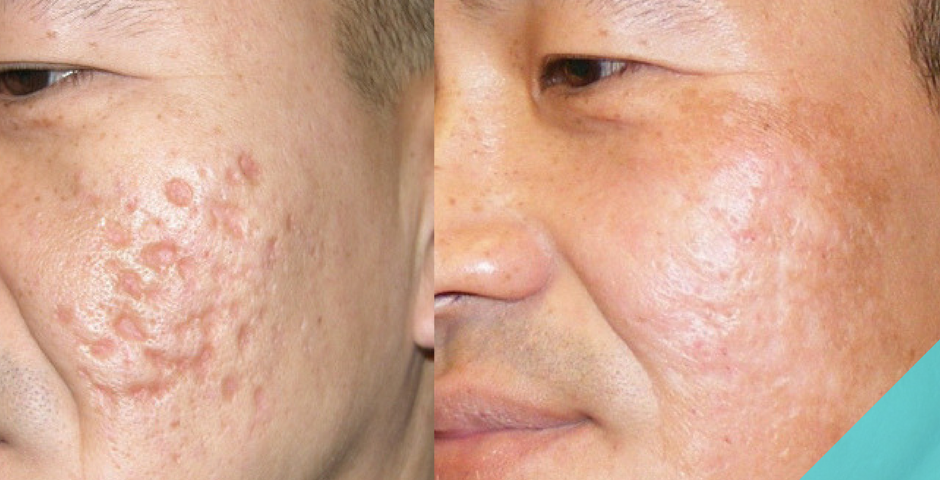Effective Solutions for Acne Scars: Just How to Accomplish Clearer Skin
Effective Solutions for Acne Scars: Just How to Accomplish Clearer Skin
Blog Article
Exploring Skin Problems: Treating and recognizing Acne Scars for Healthier Skin
Acne scars represent a substantial problem for individuals looking for to maintain healthy and balanced skin, as they can influence both look and self-confidence. Recognizing the different types of marks, from atrophic to hypertrophic, is essential for figuring out suitable therapy alternatives.
Understanding Acne Marks

The body's all-natural healing process can result in either atrophic scars, which look like depressions in the skin, or hypertrophic marks, which are elevated and arise from overproduction of collagen. Additionally, the mental toll of acne scars ought to not be ignored; lots of people report sensations of shame, anxiety, and decreased self-confidence. This psychological worry can affect social communications and general high quality of life.
Addressing acne scars needs an extensive understanding of their formation and impact. Understanding of the potential for long-lasting repercussions connected with unattended scars can inspire people to look for proper therapies. Early intervention and reliable monitoring methods can considerably improve skin appearance and improve mental resilience, emphasizing the relevance of comprehending the intricacies surrounding acne marks.
Types of Acne Marks
Acne marks can be categorized into distinctive kinds, each showing distinct characteristics and requiring particular therapy methods. acne scars. The main sorts of acne scars consist of atrophic, hypertrophic, and keloid scars

Hypertrophic marks, in comparison, are raised over the skin degree and are the result of too much collagen production throughout the healing process. They generally stay within the boundaries of the original acne lesion. Keloid marks are similar but extend beyond the original injury website, forming bigger, raised areas that can be unpleasant or itchy.
Comprehending these kinds of scars is essential for selecting suitable treatment options. Different scars may react far better to details treatments, such as laser therapies, fillers, or medical treatments, highlighting the importance of a tailored technique to acne scar monitoring.
Recognizing Your Marks
When examining the look of your skin, it is important to properly recognize the kind of marks present, as this will certainly notify the most reliable therapy technique. Acne click reference marks generally fall under two categories: hypertrophic and atrophic marks. Atrophic marks, which are the most typical, appear as depressions or imprints on the skin. These can further be identified into ice-pick marks, boxcar scars, and rolling marks, each showing distinctive attributes and requiring different methods for analysis.
Hypertrophic scars, on the other hand, are increased and happen due to excessive collagen manufacturing throughout the recovery process. Identifying the certain features of your scars-- such as size, appearance, and depth-- is necessary for appropriate recognition (acne scars). Furthermore, think about the distribution of scars across your skin, as this can suggest the intensity and duration of the acne problem
Engaging with a skin doctor can offer valuable understandings right into the nature of your scars, assisting in the differentiation in between various types. An extensive understanding of your scars will eventually cause an extra tailored and reliable therapy plan, ensuring a more clear have a peek at this site and much healthier skin tone.
Treatment Alternatives Available
Determining the details type of acne marks present on your skin lays the foundation for exploring effective treatment choices. Common types of acne scars consist of atrophic (depressed), hypertrophic (elevated), and post-inflammatory erythema.
For atrophic marks, alternatives such as chemical peels, microneedling, and laser resurfacing are extensively made use of. Chemical peels make use of acids to remove the external layer of skin, advertising brand-new cell development.
Hypertrophic scars can be treated with corticosteroid shots to flatten the scar or laser therapy to minimize soreness and improve look. Silicone gel sheets and pressure dressings may likewise aid in handling elevated scars.
In addition, dermal fillers can briefly complete depressions from atrophic marks, while surgical excision may be appropriate for serious cases. Each treatment option has its considerations and advantages, making it necessary to consult with a skin specialist. They can supply tailored recommendations based on the kind and intensity of your scars, as well as your skin type next page and total health and wellness.
Tips for Avoidance
Effective avoidance strategies can substantially minimize the possibility of developing acne marks. Using non-comedogenic items helps avoid clogged up pores, which can intensify acne.
Preventing need to pop or choose acne lesions is important, as this can result in deeper skin damage and boost the danger of scarring. Instead, take into consideration making use of a cold compress or over-the-counter therapies to reduce swelling and redness.
Sunlight security is an additional important aspect of avoidance; ultraviolet (UV) rays can darken scars and prevent the recovery procedure. Using a broad-spectrum sun block with a minimum of SPF 30 daily can safeguard the skin and advertise even recovery.
Finally, maintaining a well balanced diet plan rich in antioxidants, minerals, and vitamins supports skin health and recovery. Remaining moisturized and taking care of stress degrees can likewise play a significant function in minimizing acne flare-ups. By executing these approaches, individuals can considerably decrease their possibilities of establishing acne scars.
Conclusion
In verdict, understanding and determining acne marks is essential for effective therapy and achieving healthier skin. Various types of acne marks, consisting of hypertrophic and atrophic marks, require certain treatments customized to private needs.
The body's all-natural healing process can result in either atrophic scars, which show up as anxieties in the skin, or hypertrophic scars, which are raised and result from overproduction of collagen. They are more divided right into three subtypes: ice pick marks, boxcar marks, and rolling marks. Acne marks normally drop right into 2 categories: atrophic and hypertrophic scars. These can even more be identified into ice-pick scars, boxcar marks, and rolling scars, each showing distinct qualities and requiring different methods for analysis.
Numerous kinds of acne scars, including hypertrophic and atrophic marks, necessitate specific interventions customized to private demands.
Report this page